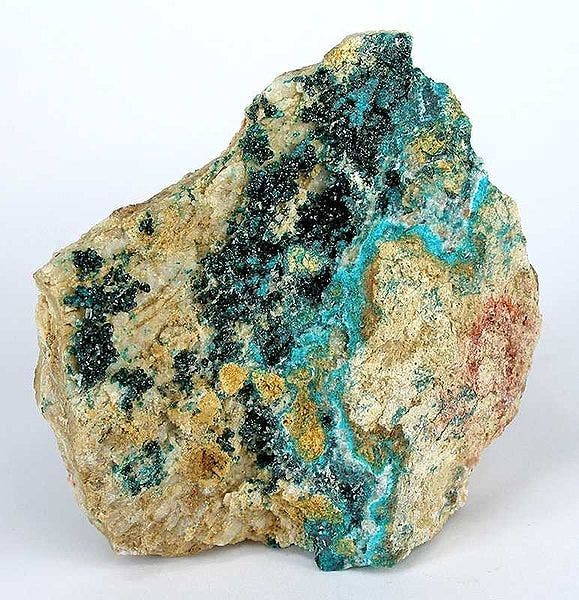Using low-frequency laser pulses, a team of researchers has carried out the first measurements on a mineral called herbertsmithite. This (pretty awesome looking) mineral features a unique kind of magnetism.

PHOTO: ROB LAVINSKY/IROCKS.COM
Insite it, magnetic elements constantly fluctuate, leading to an exotic magnetic state, unlike conventional magnetism in which all magnetic forces allign in the same direction and also unlike antiferromagnets, where adjacent magnetic elements align in opposite directions, practically nullifying the material’s magnetic field.
A joint team from MIT, Boston College and Harvard University has successfully carried out these measurements, revealing a signature in the optical conductivity of the spin-liquid state that reflects the influence of magnetism on the motion of electrons; the quantum spin liquid is a state that can be achieved in a system of interacting quantum spins – the term “liquid” simply refers to a disordered state of matter. This supports a number of theoretical predictions which had been made. Nuh Gedik, the Biedenharn Career Development Associate Professor of Physics at MIT and lead author of the study was thrilled:
“We think this is good evidence,” Gedik says, “and it can help to settle what has been a pretty big debate in spin-liquid research.”

Daniel Pilon, a graduate student also at MIT was also happy to be part of the first experiment which tackles this unique type of magnetism:
“Theorists have provided a number of theories on how a spin-liquid state could be formed in herbertsmithite,” Pilon explains. “But to date there has been no experiment that directly distinguishes among them. We believe that our experiment has provided the first direct evidence for the realization of one of these theoretical models in herbertsmithite.”
Quantum spin liquids such as this one have been proposed all the way back in 1973, but up until a few years, this was only considered to be a theoretical state. It took almost 40 years to actually discover this mineral which exhibits such a state.
These exciting discoveries will remain in the lab for now, as no forseeable direct advantage ca be drawn from this state. Still, these are only the first steps in what is a thrilling new field.
Gedik says, “Although it is hard to predict any potential applications at this stage, basic research on this unusual phase of matter could help us to solve some very complicated problems in physics, particularly high-temperature superconductivity, which might eventually lead to important applications.” In addition, Pilon says, “This work might also be useful for the development of quantum computing.”


